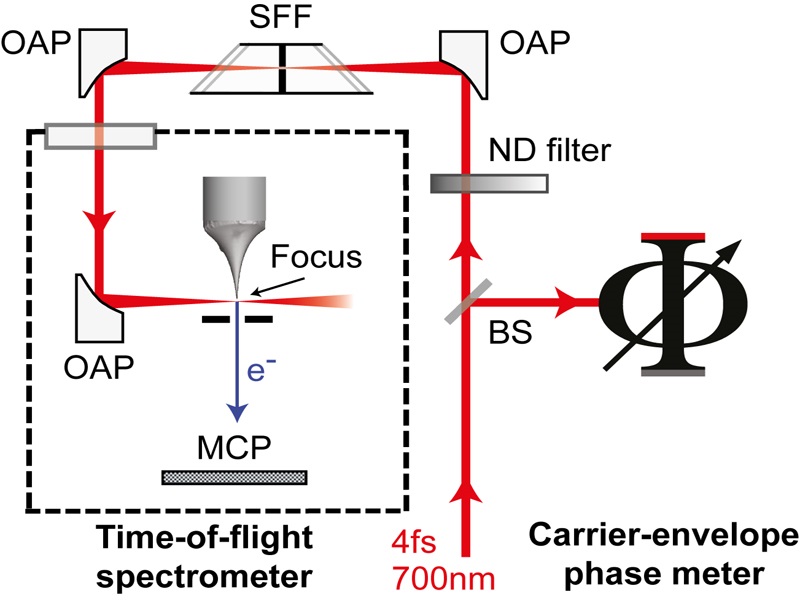July 12, 2017
Physicists at the Max Planck Institute of Quantum Optics, the Friedrich-Alexander-Universität Erlangen-Nürnberg (FAU) and the Friedrich Schiller University Jena (FSU) have accomplished a quantum leap in light research. They have managed to capture the behaviour of extremely short laser pulses during focusing by means of very high spatial and temporal resolution. The results are of fundamental relevance to understanding the interactions between light and matter and will make it possible to control electron movements and chemical reactions to an extent that was previously not feasible. These insights into fundamental physics will particularly profit further research into new radiation sources and in the field of light wave electronics. The researchers recently published their findings in the leading specialist journal ‘Nature Physics’.
Ultrashort light pulses with such a wide optical spectrum range that the beams appear white are in common use nowadays. Among other things they are used to examine the retina of the eye while in physics they are employed to control processes at the atomic level and analyse them in slow motion. In almost all these applications, the white laser pulses need to be focused. As it is the specific form of the light wave that determines how electrons, for example, will move within it, it is essential to know what the focused laser beam actually looks like in detail.
In order to better understand why, think of a ship in stormy seas. The helmsman not only has to know how high and how long the waves are but also has to keep an eye on incoming waves in order to know when they will hit the ship in order to find a safe path up to the crest of the wave on one side and down on the other. In the same way, it is important for researchers to know how and where the maximum of a light wave will strike electrons in an experiment or application in order to have a targeted influence on them. The changes to and propagation of light waves in an electrical field take place on a time scale of a few hundred attoseconds – in other words, within one billionth of a billionth of a second. Until recently, it was not possible to measure the exact distribution of the wave troughs and peaks at the focus of a laser beam on this time scale.
The researchers have now achieved this by focusing laser pulses onto a nanometre-sharp metal tip, causing the tip to emit electrons. These electrons act as a kind of sensor that enables the researchers to interpret the exact form of the light wave.
Watching light travel
Almost 130 years ago, the French physicist Louis Georges Gouy (1854-1926) observed and described a phase shift that occurred during the focusing of monochromatic light when interference was introduced. This effect was named the ‘Gouy phase’ after its discoverer and for a long time it was assumed that the effect would be the same in the case of white laser spectra, which consist of many colours of light. The results obtained in the joint project have added to our understanding of the effect, so that even when it comes to short light pulses – and to stay with the metaphor for the moment – no captain will be taken by surprise by unexpected waves in future.
original publication
Dominik Hoff, Michael Krüger, Lothar Maisenbacher, A. M. Sayler, Gerhard G. Paulus, und Peter Hommelhoff
Tracing the phase of focused broadband laser pulses
Nature Physics, 10. Juli 2017, DOI: 10.1038/nphys4185















